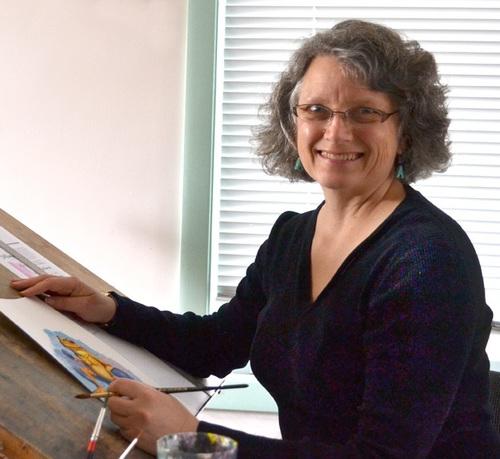
Phyllis Saroff is a freelance illustrator working in Maryland. She does book illustration, natural science and editorial pieces. Her scientific artwork is featured in wayside signs and educational materials across the country. Clients include, the United States Department of the Interior, the United States Fish and Wildlife Service, the Forest Service and the Fairfax County Park Authority in Virginia.
Book publishers she has worked with creating non fiction children’s book illustration are Charlesbridge, Arbordale and Lerner Publishing. Phyllis created historic fictional illustrations for Bunker Hill Publishing in a book featuring the artist William Morris. She has worked with Carus Publishing creating illustrations for children’s magazines. Other children’s magazine clients include Highlights Magazine.
The following links are to some of the books Phyllis has illustrated.
http://www.charlesbridge.com/productdetails.cfm?PC=4717
http://www.bunker-hill-publishing.com/time-and-the-tapestry-a-william-morris-adventure
http://www.bunker-hill-publishing.com/belle-the-amazing-astonishing-magical-journey-of-an-artfully-painted-lady-by-mary-lee-corlett
http://hachai.com/newsite2012/products/the-hidden-artist/
Other clients include the National Cherry Blossom Festival in Washington D. C., the Mid Atlantic Car Wash Association, the Annapolis Maritime Museum and the Chesapeake Bay Program.
Phyllis has a Masters of Fine Art from The Academy of Art University. She also has a Bachelor of Fine Art from Virginia Commonwealth University.
Here is Phyllis explaining her process:

My process working digitally is always changing since it is a relatively new medium for me. I use the same basics used in traditional painting such as blocking in shadow masses first, and working general to specific. I make sure all my values are determined in the rough stage and I keep that drawing handy to refer to and to maintain that value pattern. Color can be distracting and I want to be sure the value pattern is the same as my rough. Sometimes I use traditional textures and combine that with digital painting. The effect is often fun and I experiment with that frequently.

A good example of this is the cover illustration for my recent book with Arbordale Publishing. I like to give the client several samples to choose from and I have to be happy to do all them. Luckily, they picked number four – the best one. Looking at these now I can see most of my ideas were way too busy.
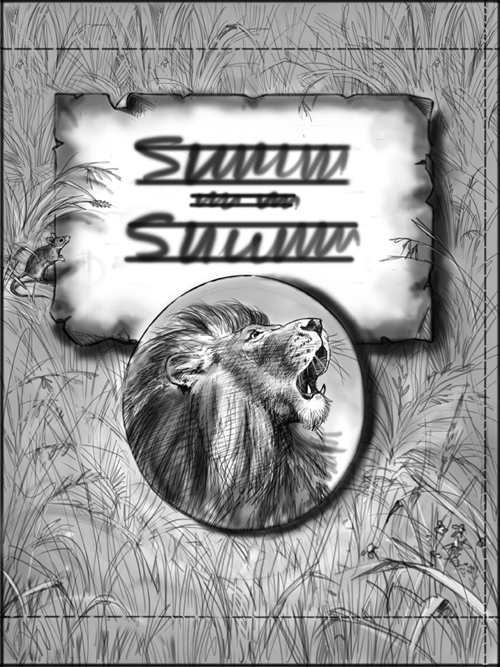
I refine the drawing to a tight rough and in this case I started rendering the lion first. He was the focal point and whatever came after him needed to harmonize with his colors and texture. You can see the water color texture I used on a separate layer, and I adjusted the colors using the sliders. I wanted a small bit of cool colors to be relief from all the warm colors of the lion and and the grass colors I was seeing in my mind. Those cool colors had yellow in them so they were sure to harmonize with the golds and browns. I also knew there would be a mix of warm greens in the grass, so greens were also desirable in that watercolor tidbit. I was reminded of the multitudes of grass color by looking out my window, and recalling my landscape class from my masters program. I also used a warm watercolor texture under the lion’s fur to get a good fuzzy look and avoid the slick look of digital painting.
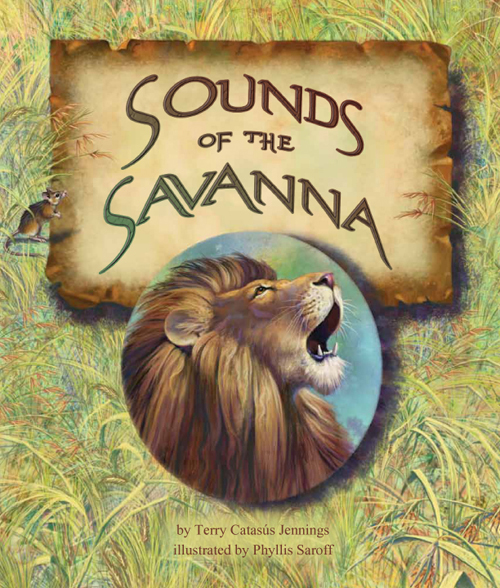
I went through the same process with the banner for the type and the grass. I positively love how they created the typography, and the collaboration is something I love about illustration work. I love the wonderful surprises that other skilled artists bring to a project.
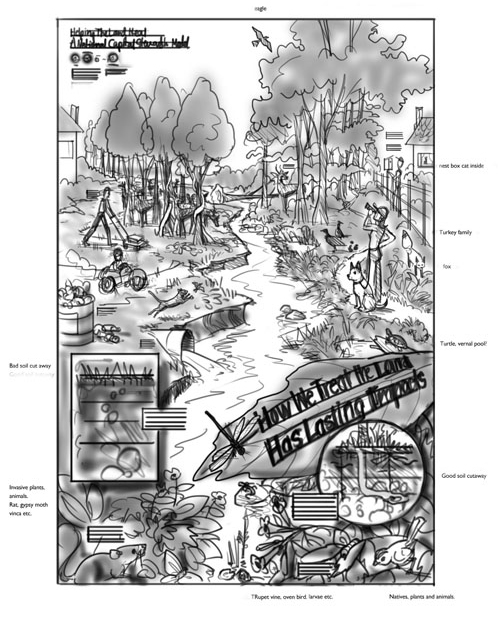
The Fairfax County Virginia Park Authority poster beginning sketch.
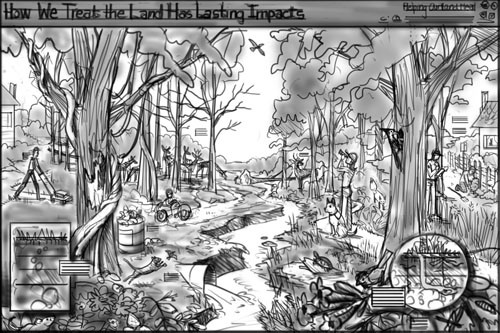
The Fairfax County Virginia Park Authority poster is a good example of the working process when there is a large amount of information in an image. I also had to show the clients, who were all scientists how the process worked.

So, I gave them the sample of the shipwrecked Mariner from the Just So Story by Rudyard Kipling. This helped them understand how we were going to work together to manage a large project with lots of requirements.

They gave me a list of species and I indicated many of them in my initial drawings so the scientists could understand my scribbles. Communication and a good client relationship is as important as a stunning illustration.
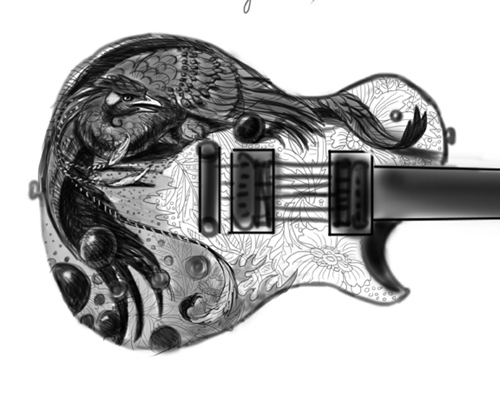 The rough drawing was done in photoshop. The value pattern is established in the rough, and I printed this to refer to as I worked.
The rough drawing was done in photoshop. The value pattern is established in the rough, and I printed this to refer to as I worked.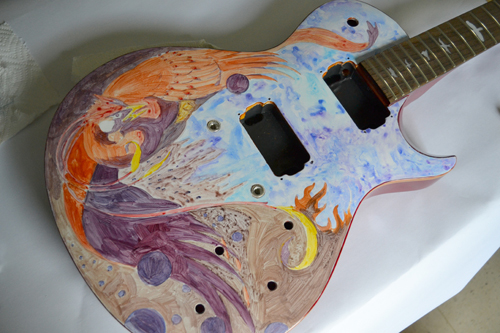
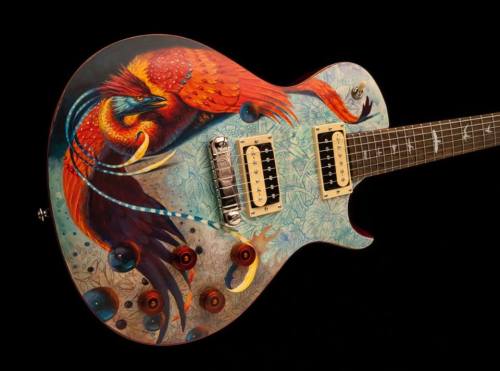
Picture of finished quitar.
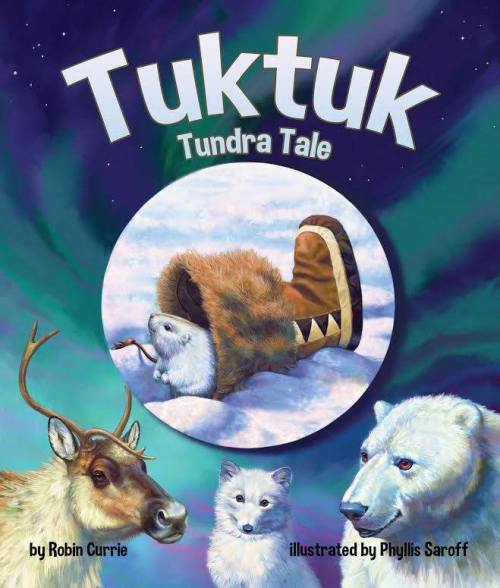
Two book covers.

How long have you been illustrating?
I have been illustrating since 1983 when I graduated from VCU.
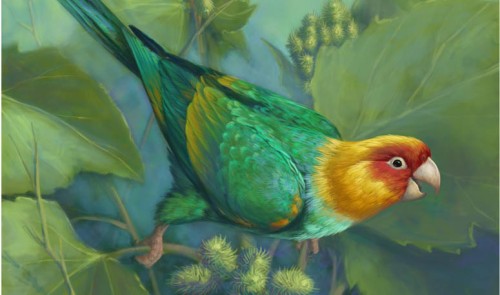
What was the first thing you painted where someone paid you for your work?
I was paid for a series of black and white pencil drawings showing how to take a fish hook out of a hand. The magazine was Virginia Wildlife.
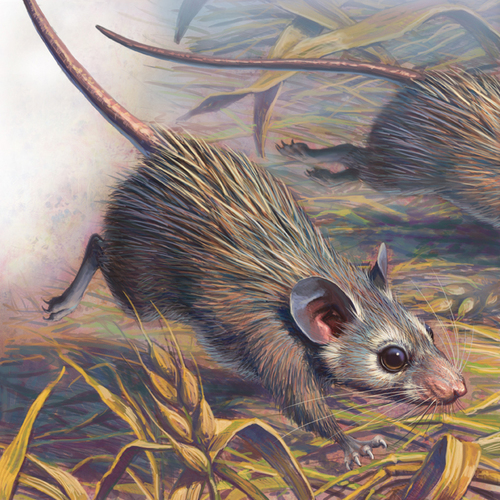
What made you choose to get your BFA from the Virginia Commonwealth University?
I knew VCU was a good school and it was close to home.
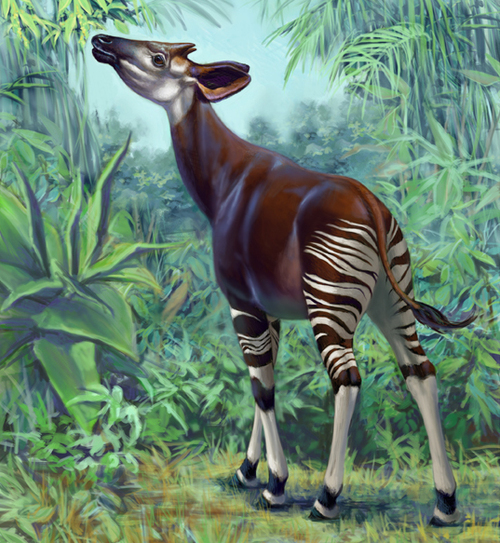
What did you study there?
I was a visual communications major with an illustration track.
Did you go right from there to getting your MFA at The Academy of Art University?
No, I went back to get my graduate degree after nearly thirty years. I think going back after all the experience I had at living and illustrating was a good decision. I brought a lot to the program and I got a lot out of it.

What did you study at The Academy of Art University?
I was a traditional illustration student. I also benefited from all the core classes I had to take. There were many formal classes that filled in what I didn’t get as an undergraduate, and that was good. I think no one program has it all, there are bound to be gaps.
I am assuming that it is the one in San Francisco, right. Did you find the culture different on the West Coast?
I was an online student. Again, my age and experience was helpful. I was working and taking care of elderly parents at the same time, so it was good I knew how to manage time and handle stress.
Do you feel College helped develop your style?
Yes, my style is constantly evolving as anyone’s is. The input and critique from a school environment always pushes someone out of their regular solutions. It also introduced me to many other artists and opened my mind to different ways of working.
What type of work did you do after you got out of school?
I do a lot of children’s illustration and natural science illustration. I do a small amount of editorial and this has been the same pattern for me since I graduated from VCU in 1983.
Did the college you attended help you get work when you graduated?
My graduate degree helped me get work because my work improved and I had to take a business and marketing class. That was missing as an undergrad and it was very helpful.
Have you seen your work change since you left school?
I got my masters in 2013 and my work is better in many ways. It is more professional and I find more dynamic ways of solving a problem. I also got on the digital band wagon which is something I was ignorant about before my masters program. I knew I had to learn to incorporate new tools or get left behind.
When did you decide you wanted to illustrate for children?
I sent Cricket magazine a promotional package in the late 1990’s because I looked through the magazine and thought, “I could do that.” I got an assignment to illustrate a poem. But I think I always wanted to illustrate for children, ever since age seven when I created my own illustrated books of stapled paper to give to my mother.
What was your first book you had published?
Mary Anning, Fossil Hunter with Carolrhoda Books. The editor found my website and they gave me an assignment to illustrate a book about Mary Anning. That was pure luck. I didn’t even market to them.
How did that contract come about?
The editor found my website and they gave me an assignment to illustrate a book about Mary Anning, a fossil hunter, based on an illustration of mine that had bones in it!
Did you do other types of illustrating before you got the book contract?
I did illustrations for Virginia Wildlife Magazine,Cricket, World Wildlife fund, the Chesapeake Bay Foundation before my first book contract. The illustration that got me that first book assignment was a self created piece about hip dysplasia in dogs. I made it up, and the editor liked the bones.
What steered you toward specializing in educational and natural science book illustrations?
Natural science illustration is something I am good at. I grew up in a scientific household, we had a microscope on the kitchen table. I thought all kitchens had one. We had all kinds of creatures in an out of the house and drawing the natural world came easily to me.
How many picture books have your illustrated?
I think fourteen. I did a whole series of non-fiction books with Lerner, but I count that as one job.
What do you consider to be your biggest success?
That is a hard question. I am proud of doing the Cherry Blossom Festival for Washington DC. I think my latest book “Sounds of the Savanna” with Arbordale is a success.
Do you illustrate full time?
Yes, I work as an artist full time.
Do you have any desire to write and illustrate your own picture book?
Yes, I do have some ideas for books. I’ll need to find time to write them up and present them to a publisher. My ideas have to do with serious themes, and the challenge is presenting that to children in an appropriate way.
I see you are represented by Wendy Lynn & Co.? How and when did the two of you connect? How long have you been working together?
I meet a woman at Jury Duty who said she had a friend who was an agent. So I gave that friend a call. One never knows what connections you can make during a jury duty break! We have been together for almost a year. So far Wendy Lynn has provided a lot of assignments to me.
Do you have a favorite medium you use?
I love acrylic, oil, watercolor and digital. So, no I don’t have a favorite. The decision is based on time and money. Occasionally a client makes a specific request. Usually, they dont have a preference, and I decide.
Do you take research pictures before you start a project?
I set up human models especially if a character appears multiple times. I find several animal photo references and compile them as I draw. I can only do this with animals for some reason -perhaps because I am so comfortable with drawing them.
Do you use Photoshop with any of your work?
Yes, I use photoshop from start to finish if time is an issue. I find that changes are easy to make if I work completely digitally. When I have time I like to work traditionally and when I have lots and lots of time I like to experiment with mixed media and collage.
Do you have and use a graphic tablet?
I use a wacomb tablet when working digitally.
Do you do exhibits to market your art?
I did that a few times and I have not found that profitable. The snail mail promotional package, followed up with a phone call and thank you post card is the best method so far for me.
Has any of your work appeared in magazines?
I have illustrations in Iguana, Ranger Rick, Boys’ Life. It has been a long time since Cricket has hired me, but I keep trying!
Do you have a studio in your house?
My studio is a converted carport in a 1950’s rambler. It suits me well.
Is there anything in your studio, other than paint and brushes that you couldn’t live without?
The windows and my dogs snoozing under the table.
Do you follow any type of routine to attain your career goals?
I try to maintain a certain amount of marketing, especially to markets that are not children’s illustration. Without the marketing, there are no career advancements.
Any exciting projects on the horizon?
I am working on two new books with Arbordale. They are stretching me in terms of subject matter and challenging manuscripts. But challenge is good.
Do you think the Internet has opened any doors for you?
Yes, it opens doors for everyone. I am able to be insipred by so many other artists and I can look at their websites when I need a jolt. I have a file of inspirational artists and their websites that I refer to a lot!
What are your career goals?
I am always interested in finding new and interesting clients. I also would like to work on projects that advance the understanding of challenges of our time to children. For instance, books on environmental and social issues. If I could find assingments likethat, I would feel my work really has a purpose.
What are you working on now?
I am working on a book about a little lemming for Arbordale. One challenge is the snow! I have never had to create so much snow before! The other challenge is creating animals with expression without losing anatomical accuracy.
Are there any painting tips (materials, paper, etc.) you can share that work well for you? Technique tips?
I don’t think I have any wisdom in that area because I am always experimanting and changing my tools. However, I would like someone to give me tips on using a Cintiq tablet. That might be my next step up.
Any words of wisdom you can share with the illustrators who are trying to develop their career?
Take a business class! It was the most valuable class of my educational career. Also, be prepared to flub up a lot of phone calls and interviews and consider it part of the learning curve. Understand that this is a saturated market and multiple income streams are helpful. For instance, I teach art in the late afternoons to neighborhood children, and I sell oil paintings at a fine art gallery in town. And develop the imagination. That is what sells.
Thank you Phyllis for sharing your talent, process, journey, and expertise with us. Please make sure you keep in touch and share your future successes with us. To see more of Phyllis’ work, you can visit her website: http://www.saroffillustration.com
If you have a minute, please leave a comment for Phyllis. I am sure she’d love it and I enjoy reading them, too. Thanks!
Talk tomorrow,
Kathy

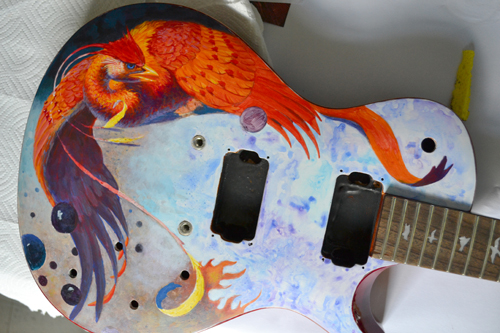
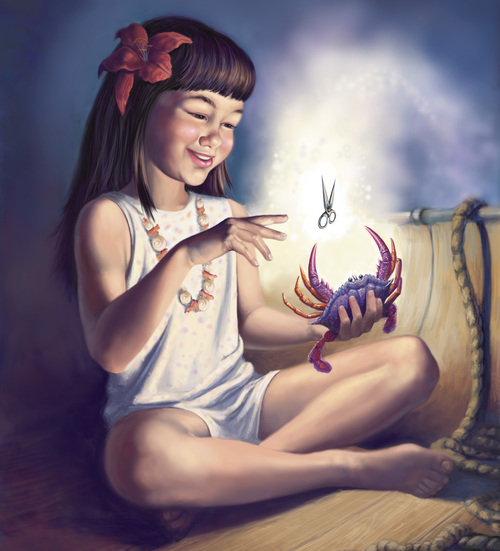

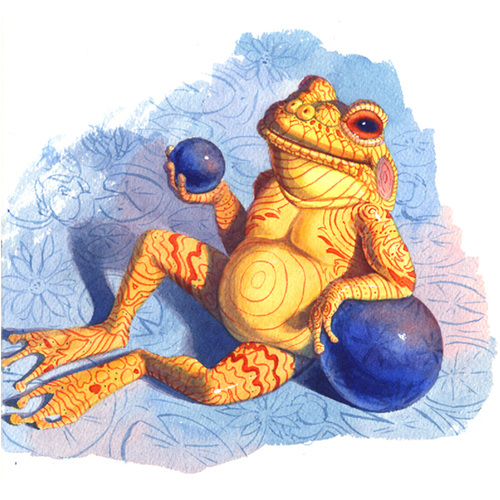
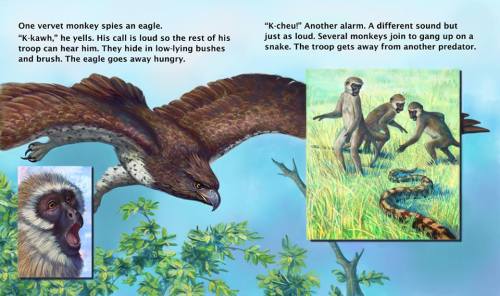

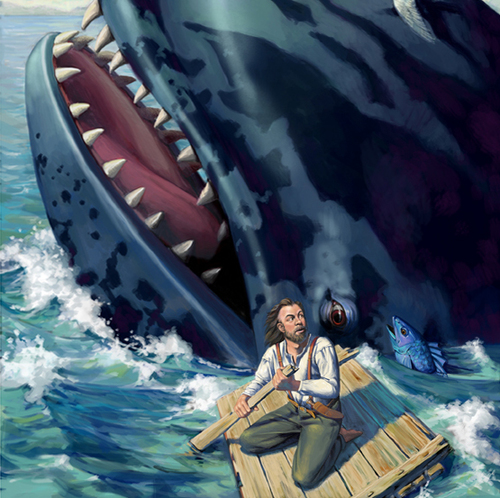

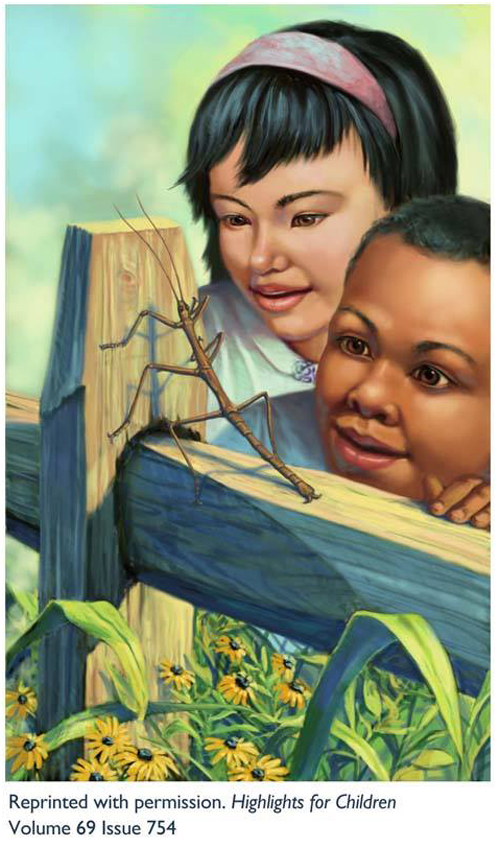
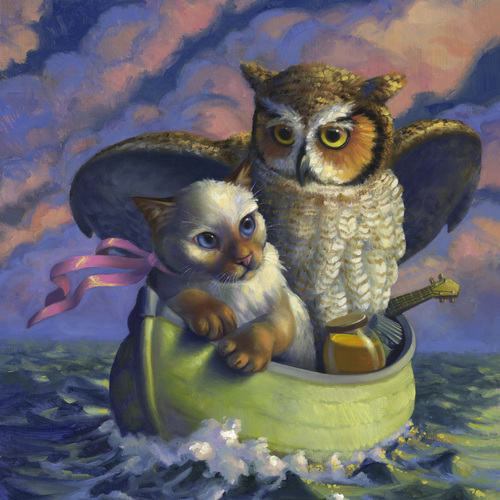

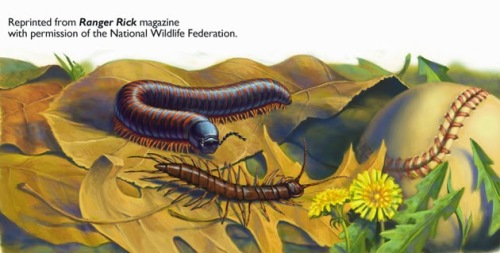

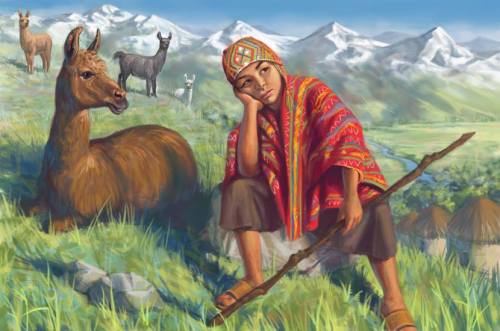

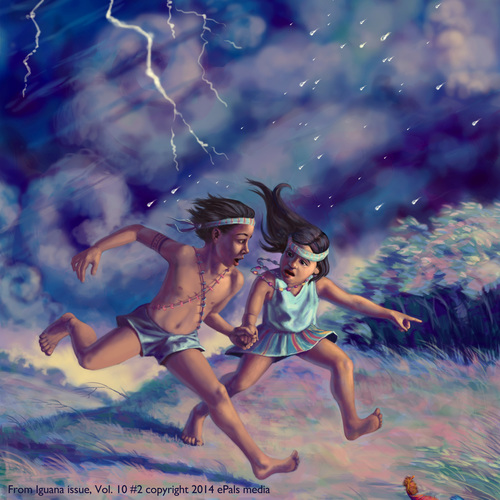
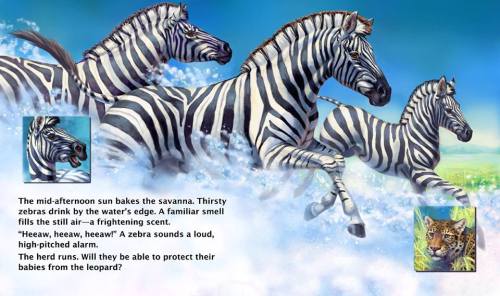

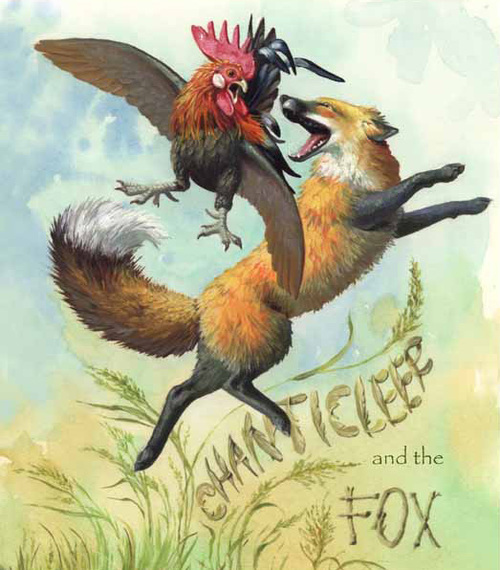
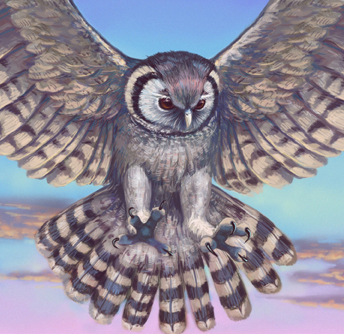


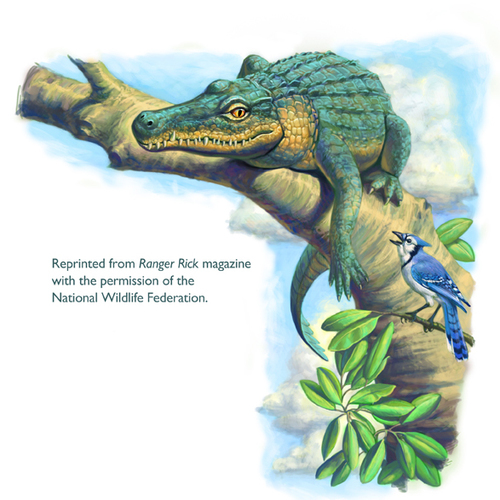
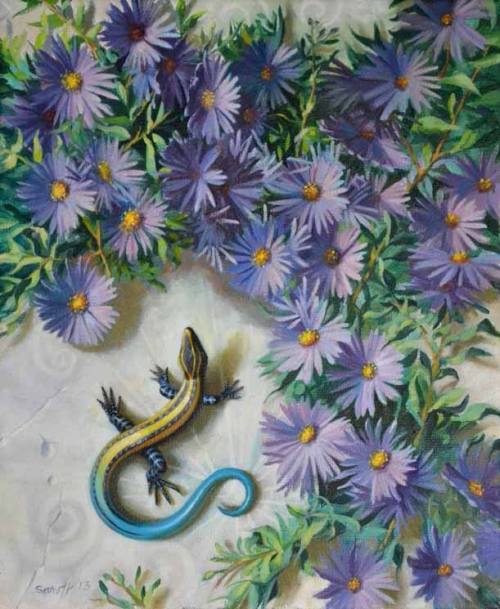
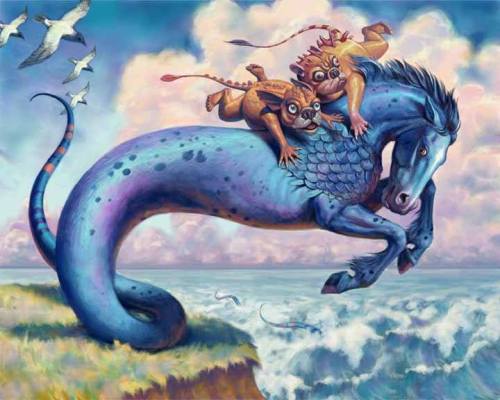



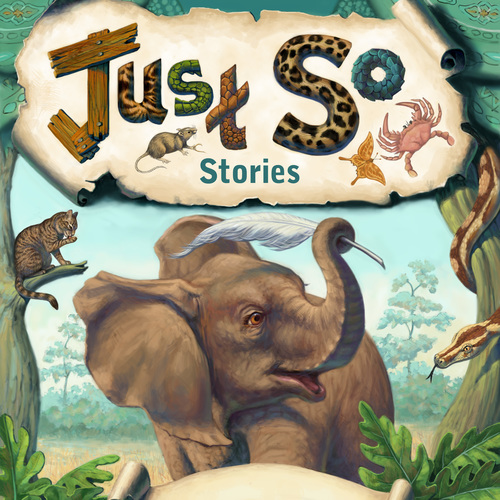

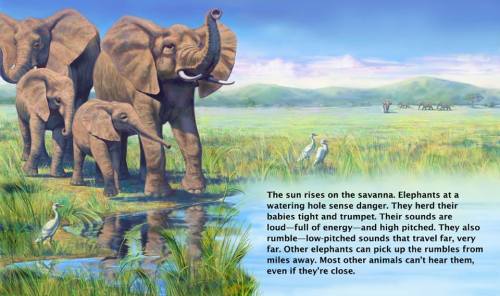


Your work is beautiful! I’m so impressed that you have found that sweet spot between realism and character! Thanks for sharing!
LikeLike
By: patriciakeeler on October 10, 2015
at 8:21 am
Absolutely beautiful work, Phyllis! So glad to read about you here.
LikeLike
By: tphumiruk on October 10, 2015
at 10:00 am
Thanks for sharing your beautiful work and process! 🙂
LikeLike
By: Doreen E. Lepore on October 10, 2015
at 10:29 am
Lovely interview, and beautiful artwork!
LikeLike
By: susandilldetwiler on October 10, 2015
at 1:02 pm
Absolutely stunning work. Amazing
LikeLike
By: Carol Baldwin on October 10, 2015
at 5:08 pm
Phyllis, Thank you for sharing your art and journey. Did you illustrate the okapi for a specific project?
LikeLike
By: ManjuBeth on October 10, 2015
at 8:54 pm
Thank you for sharing your process and some of the illustrations you have produced. Your work is exceptional. I love the realism that you incorporate in your art. This was a refreashing shift to see. It does take more effort to produce realistic illustrations. There seems to be an increase in more superficial work for children-more cartoons that don’t even relate to real life. I enjoyed what you had to share.
LikeLike
By: jmo71421 on October 11, 2015
at 10:47 am
This work is amazing!! Very encouraging interview as well.
LikeLike
By: Jill Iversen on October 12, 2015
at 12:38 pm
Such beautiful work and detail, Phyllis. 🙂
LikeLike
By: Tracy Campbell on October 18, 2015
at 7:36 pm